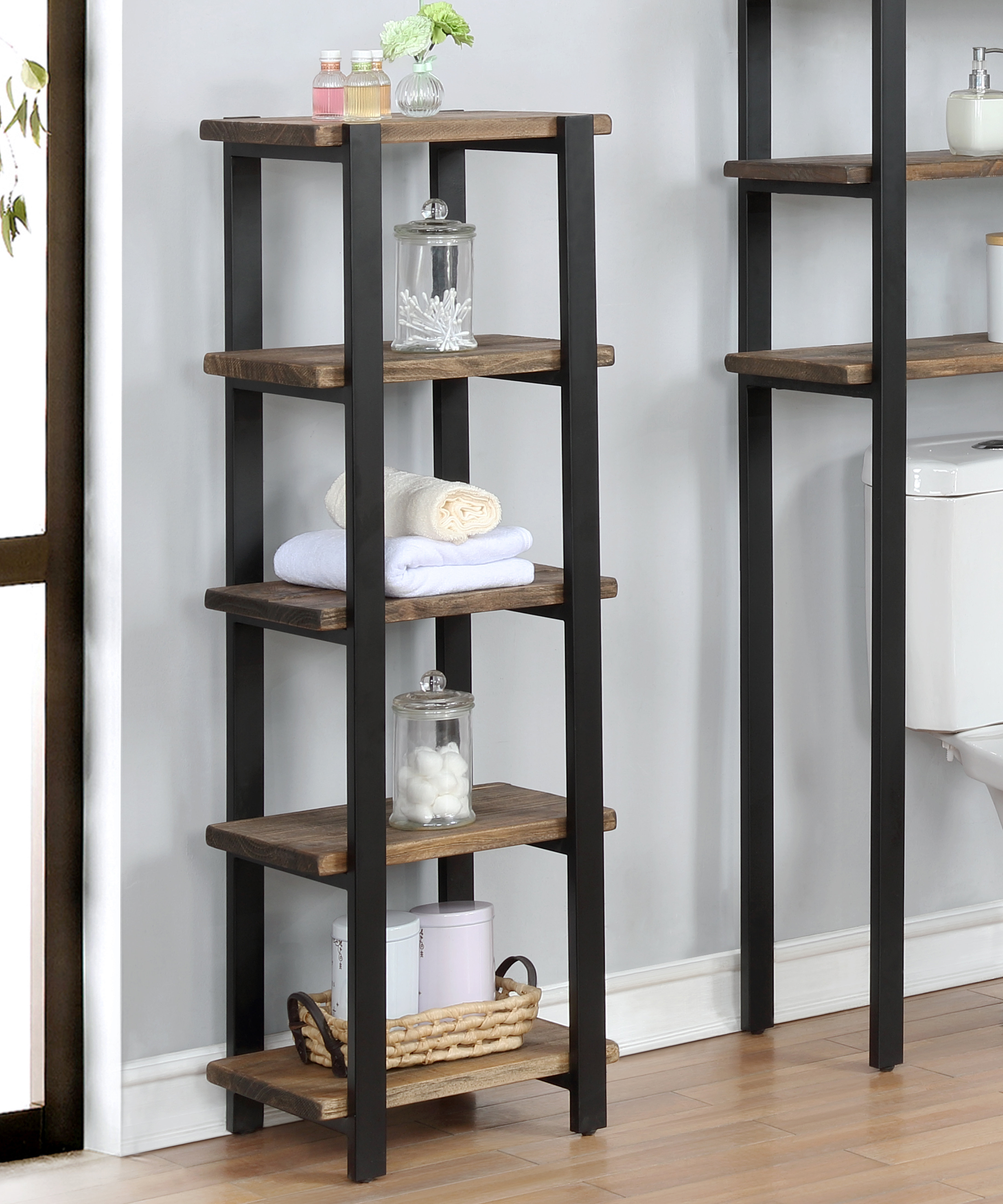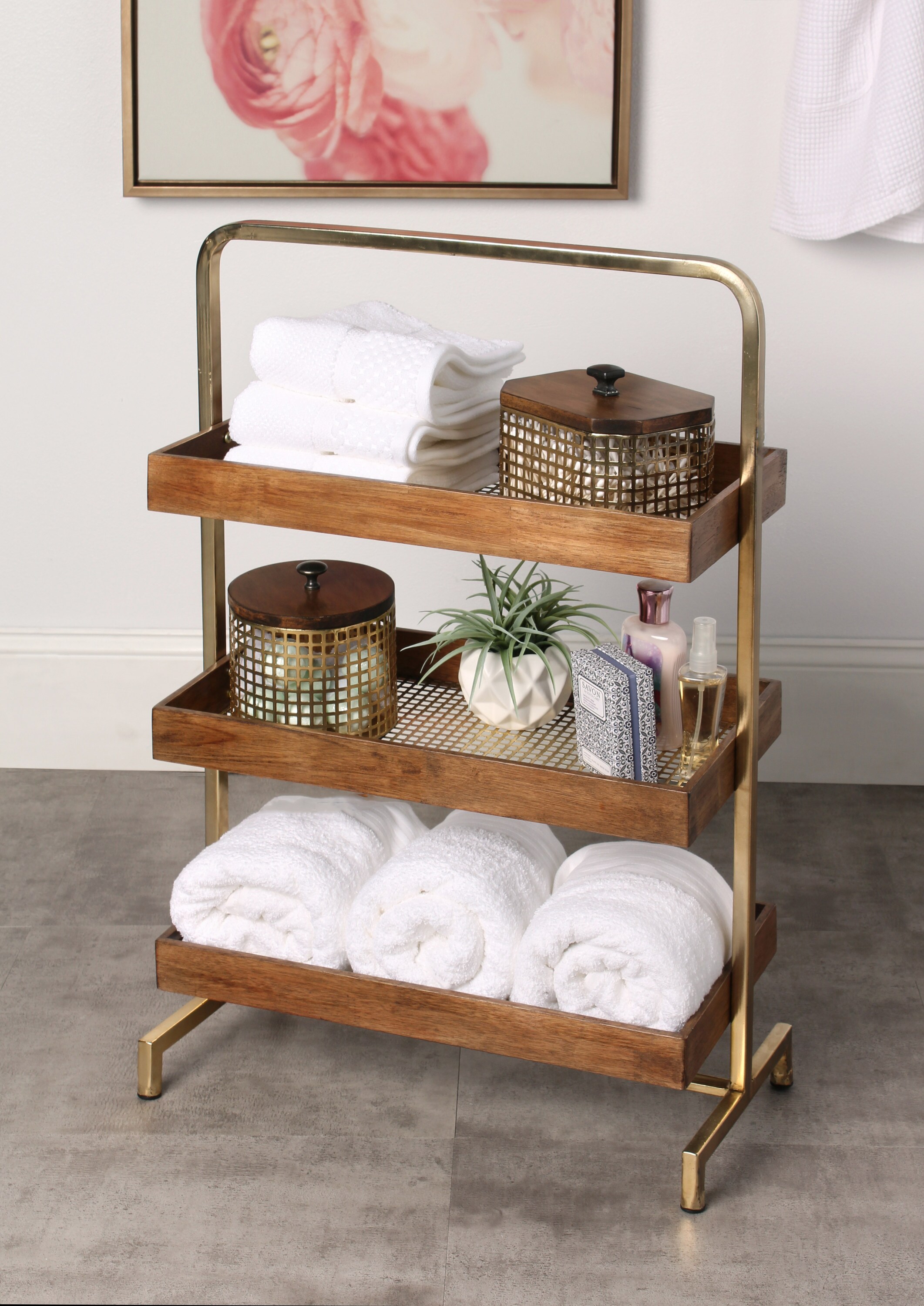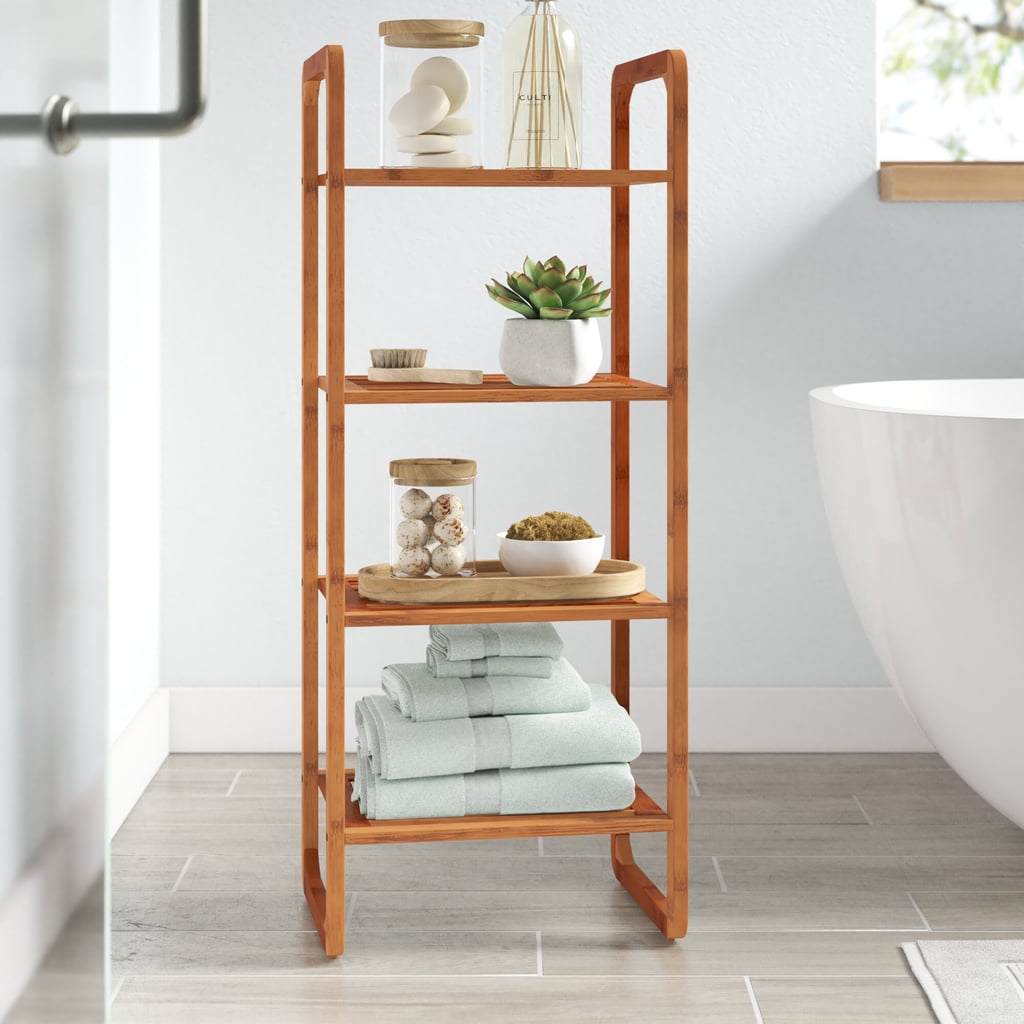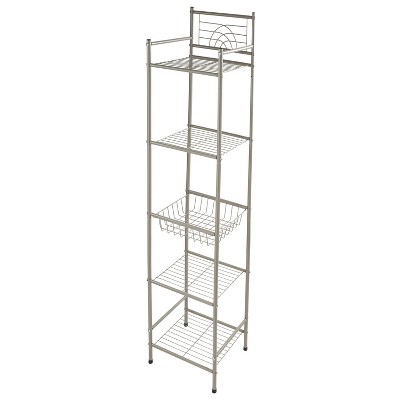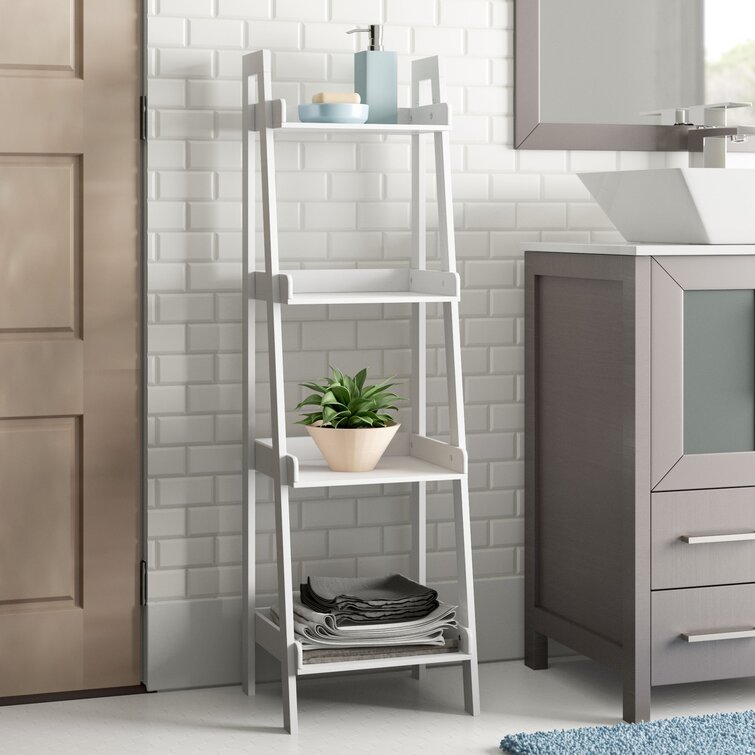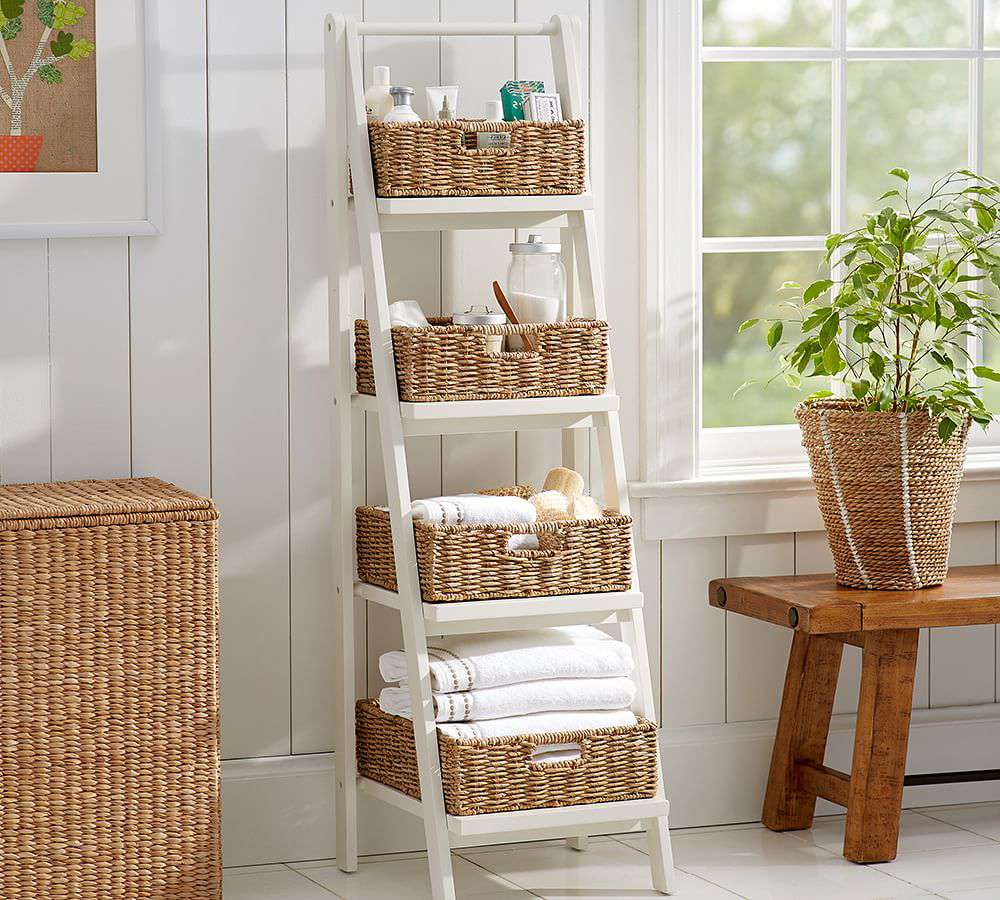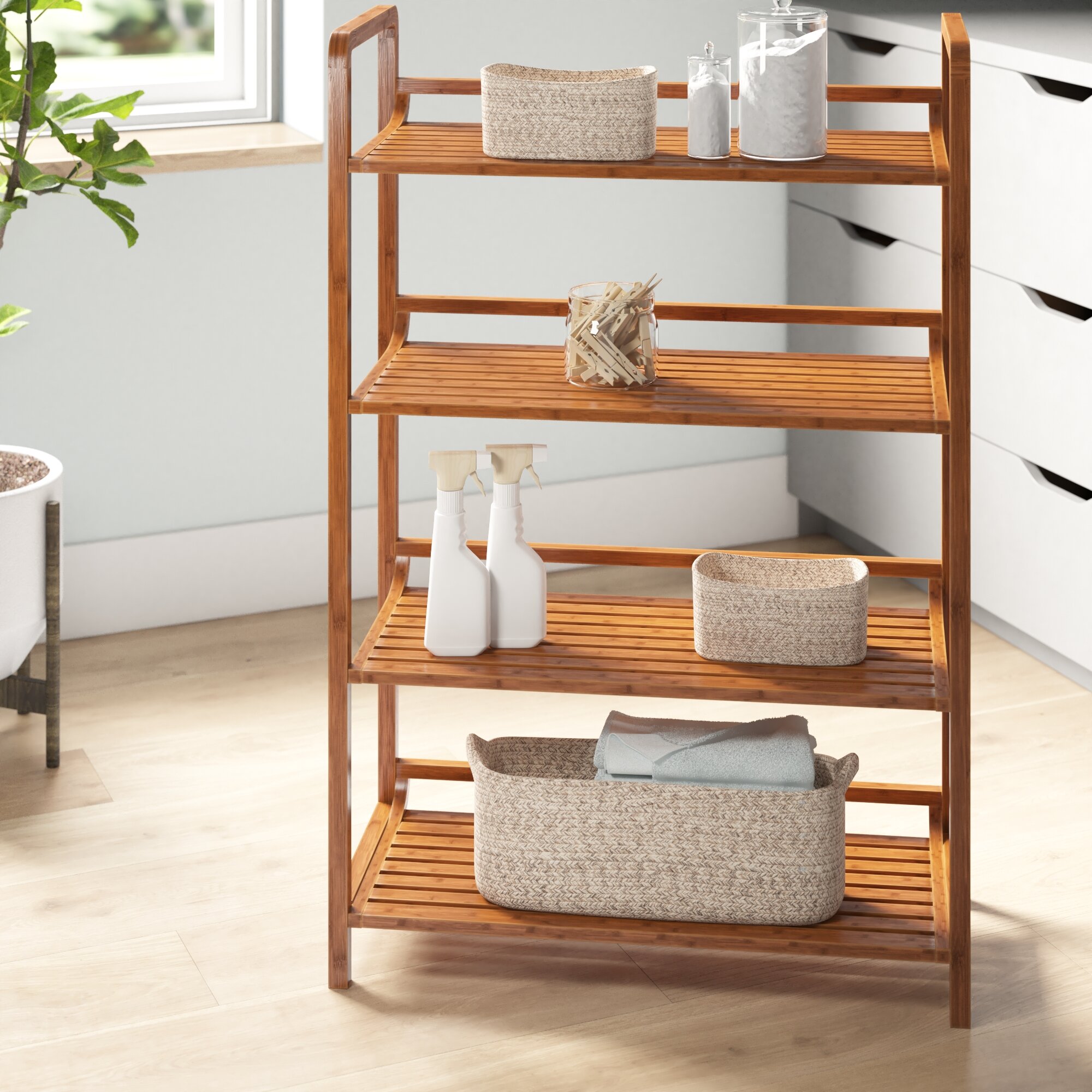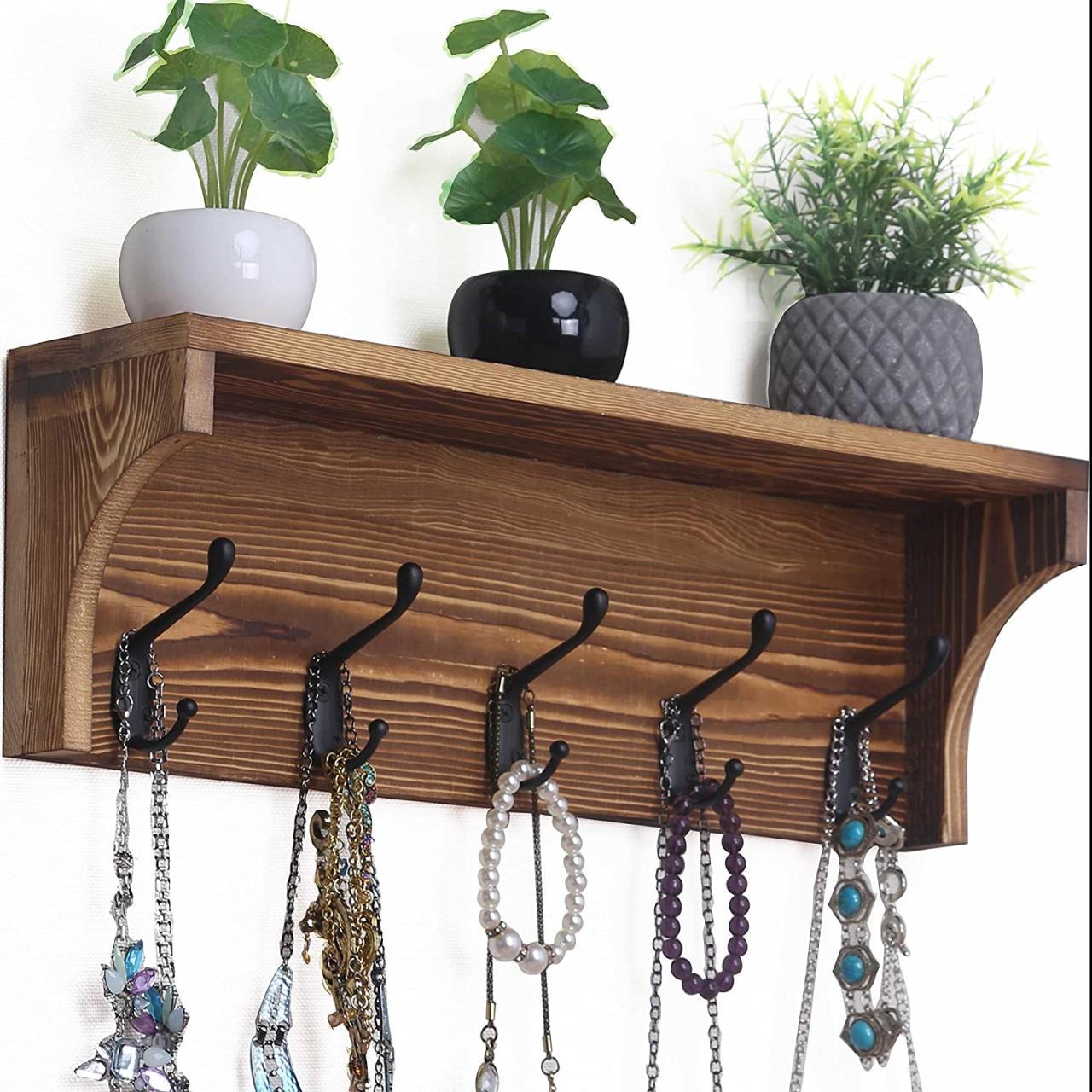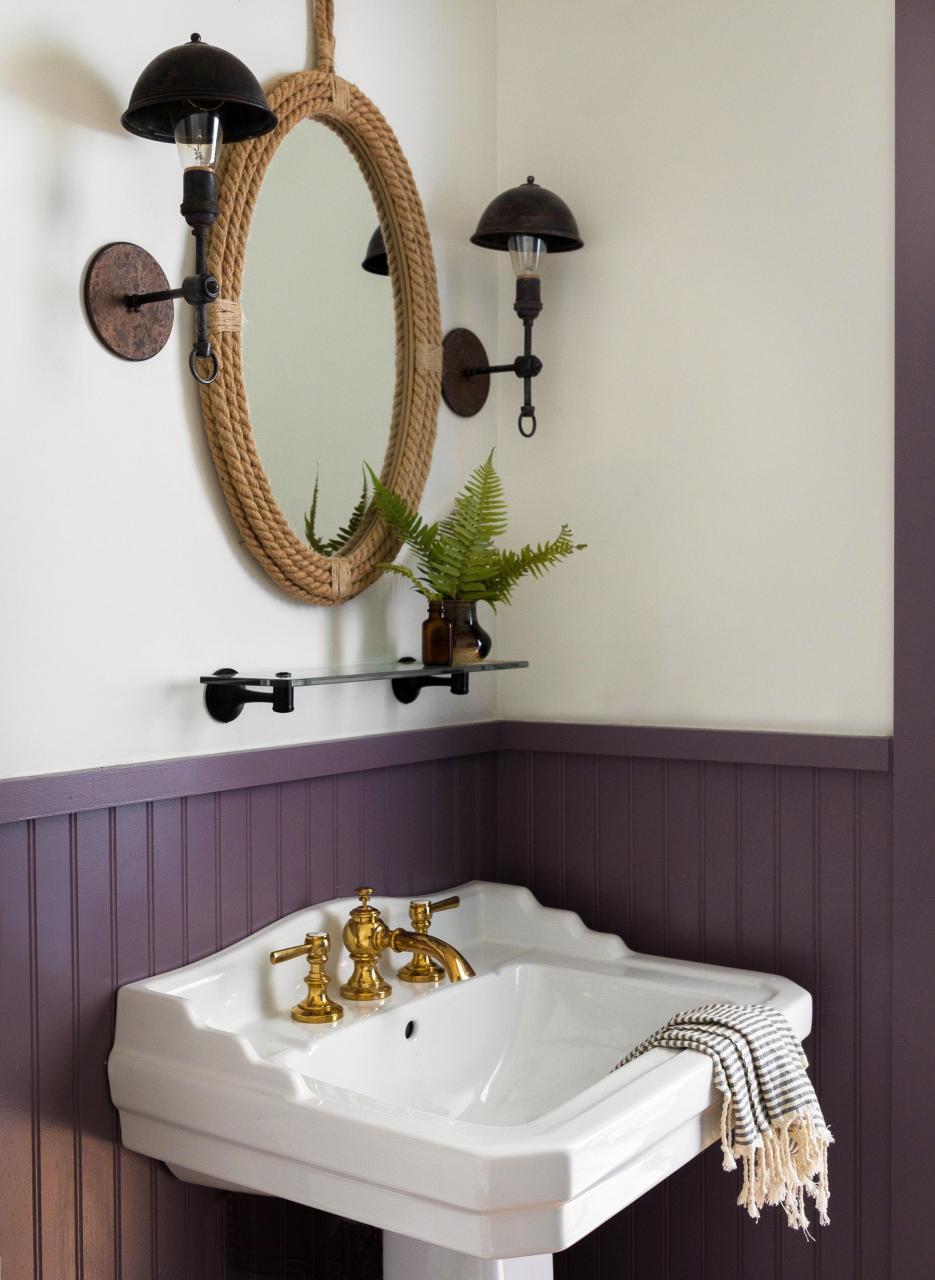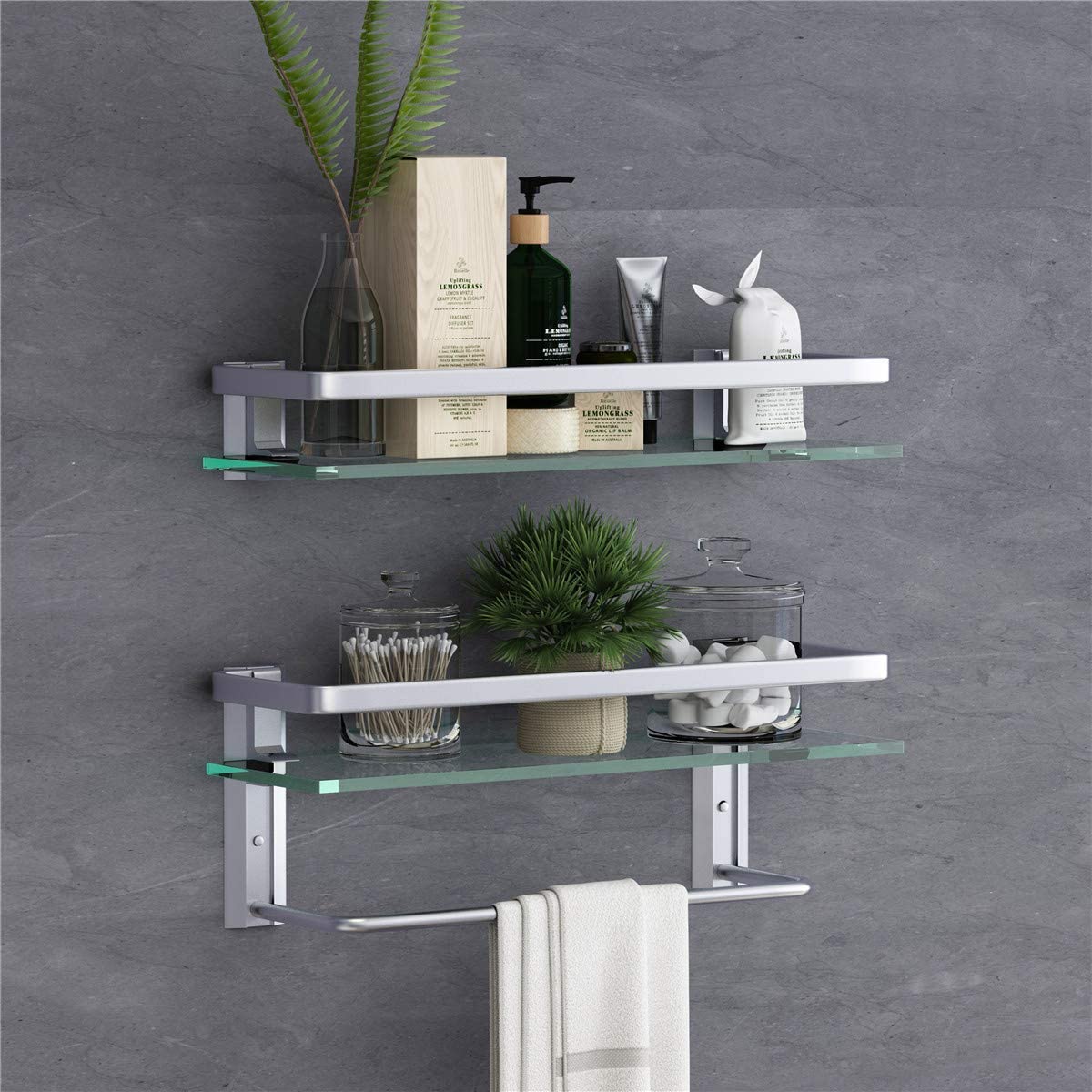Maximizing Space: How Free Standing Shelves Enhance Bathroom Storage
Free-standing shelves have become one of my go-to solutions for enhancing bathroom storage, especially when space is tight. They are versatile, stylish, and don’t require installation. For anyone looking to optimize their bathroom’s storage potential, these shelves offer flexibility without compromising the design aesthetic.
- Tapping into Vertical Space One of the first things I love about free standing shelves is how they make use of vertical space. Often, bathrooms have plenty of unused vertical real estate that is simply overlooked. By adding a tall free standing shelf unit, I can instantly create several tiers of storage that don’t take up much floor space. This is especially useful in smaller bathrooms where maximizing every square inch is key.
- Easily Movable and Repositionable Another advantage is that these shelves can be moved around to suit your changing needs. If I decide to rearrange my bathroom layout or move the shelf to another room, it’s as simple as lifting and repositioning it. There’s no need to worry about mounting or drilling holes into the wall, which can often limit placement options with traditional shelving.
- Creating Zones for Organization Free standing shelves also help me create zones within the bathroom. I use the different tiers to organize items by category, such as towels on one level, toiletries on another, and decorative items on the top. This not only makes everything more accessible but also keeps the bathroom looking neat and tidy.
- Maximizing Small Corners One of the best tricks I’ve discovered is using corner free standing shelves to maximize awkward spaces. Corners are often left unused, but a triangular or narrow shelf can fit perfectly into these spots, turning them into practical storage areas without taking up additional room.
- Ideal for Rental Homes If you’re renting like I have been in the past, free standing shelves are a blessing. Since they don’t require any permanent installation, they won’t damage the walls, and you can take them with you when you move. It’s an easy, renter-friendly way to increase storage without violating any terms of your lease.
- Customizable Storage Solutions Some free standing shelves offer adjustable tiers or interchangeable parts, which I’ve found handy for customizing storage solutions. If I need more space for taller items like bottles or plants, I can simply adjust the shelves to accommodate them. This flexibility is one of the main reasons I continue to use them in my bathrooms.

Material Choices for Free Standing Bathroom Shelves: Wood, Metal, or Plastic?
When selecting a free standing bathroom shelf, one of the key decisions to make is choosing the right material. Each option—wood, metal, or plastic—comes with its own set of advantages, and I’ve tried them all in different settings. Here’s a breakdown of the materials and their benefits.
Wood Shelves: Warmth and Style Wooden shelves are my personal favorite because they bring warmth and a natural look to the bathroom. I’ve used bamboo and oak shelves in my bathroom to add a touch of rustic charm. However, it’s important to ensure the wood is treated to withstand moisture. Untreated wood can warp over time in humid environments, so I always make sure to choose a water-resistant finish.
Metal Shelves: Modern and Sleek Metal shelves, especially chrome or stainless steel, are great for creating a modern, sleek aesthetic. They’re also incredibly durable and resistant to moisture, making them a practical choice for bathrooms. I’ve found that metal shelves tend to have a minimalist design, which works well if you want a more streamlined, industrial look. They also tend to be lightweight but sturdy, which is ideal for a bathroom setting.
Plastic Shelves: Affordable and Practical If you’re on a budget, plastic shelves are a cost-effective option. I’ve used plastic shelves in guest bathrooms and kids’ bathrooms because they’re lightweight, easy to clean, and come in a variety of colors and designs. While they may not offer the same elegance as wood or metal, they’re highly functional and resistant to water, which is always a plus in a bathroom.
Combining Materials In some cases, I’ve mixed materials to get the best of both worlds. For instance, I once installed a shelf unit with a metal frame and wooden tiers. The combination of materials gave me both the durability of metal and the aesthetic appeal of wood. It’s a creative way to balance practicality with design.
Durability and Maintenance When it comes to durability, metal shelves are the most robust, followed closely by treated wood. Plastic shelves, while resistant to moisture, may not be as durable in the long run, especially if they are subjected to heavy weight. However, they’re incredibly easy to maintain—just wipe them down with a damp cloth.
Matching Your Bathroom’s Style Finally, I always consider how the material will match the overall style of my bathroom. Wooden shelves are perfect for traditional or farmhouse-style bathrooms, while metal works better in modern, industrial spaces. Plastic shelves, with their range of color options, can fit into a variety of settings but are particularly suited for casual, low-maintenance spaces.
Design Styles for Free Standing Shelves: From Minimalist to Vintage
The design of a free standing shelf can completely transform the look of a bathroom. I’ve explored different design styles, from minimalist to vintage, to suit various bathroom aesthetics. Let’s dive into how these styles can impact your space.
Minimalist Shelves for a Clean Look Minimalist design is all about simplicity, and that’s why I often opt for sleek, simple shelves when I want a clean, uncluttered look. A metal or glass free standing shelf with straight lines and no embellishments blends perfectly into a modern bathroom. It’s a great way to keep the focus on the essentials without adding visual clutter.
Rustic and Farmhouse Charm On the opposite end of the spectrum, rustic and farmhouse-style free standing shelves bring a sense of warmth and coziness. I’ve used reclaimed wood shelves with a distressed finish in bathrooms to create a vintage feel. The natural texture of the wood adds character to the space and pairs beautifully with other rustic bathroom accessories.
Vintage and Antique-Inspired Shelves For those who love old-world charm, vintage and antique-inspired shelves are an excellent choice. I once installed an ornate, wrought-iron shelf in a Victorian-style bathroom, and it immediately became the centerpiece of the room. These shelves often feature intricate details and scrollwork that give them a timeless appeal.
Industrial-Inspired Shelves for Urban Spaces Industrial shelves have a raw, edgy vibe that works well in urban or loft-style bathrooms. I’ve seen shelves made from metal pipes and rough-hewn wood that fit perfectly into an industrial setting. The combination of metal and wood adds a rugged charm, and the exposed materials give the bathroom an authentic, unfinished look.
Scandinavian Shelves for a Cozy Minimalist Vibe Scandinavian design is all about minimalism with a cozy touch. I’ve incorporated light wood shelves with simple, functional designs into bathrooms for a Scandinavian feel. The light tones and clean lines make the space feel airy and bright, perfect for creating a relaxing atmosphere.
Bohemian and Eclectic Designs If you’re someone who loves mixing patterns, colors, and textures, a Bohemian-style free standing shelf might be for you. I’ve used shelves with woven baskets, plants, and patterned towels to create a relaxed, eclectic vibe in the bathroom. The key is to mix and match elements that feel personal and add warmth to the space.
Practical Uses: Organizing Essentials with a Free Standing Bathroom Shelf
When it comes to organizing a bathroom, free standing shelves are a lifesaver. They provide storage without requiring wall installation and can be adapted to hold a variety of essentials. Over time, I’ve found that these shelves are not only decorative but also highly practical for organizing all kinds of bathroom items.
Storing Towels and Linens One of the primary uses for free standing shelves in my bathroom is storing towels and linens. I fold towels neatly and place them on the lower tiers of the shelf, keeping them within easy reach. This way, the shelves double as storage and display, turning everyday items into part of the decor.
Keeping Toiletries Organized I like to use the middle tiers of my free standing shelf for organizing toiletries. By placing baskets or trays on these shelves, I can group similar items together, such as skincare products, soaps, and shampoos. This not only keeps the bathroom tidy but also makes it easier to find what I need.
Displaying Decorative Items Free standing shelves also serve as a platform for displaying decorative items. I often place small plants, candles, or even framed pictures on the top tier of the shelf. These personal touches make the bathroom feel more like an extension of the home rather than just a utilitarian space.
Storing Cleaning Supplies If you don’t have enough cabinet space for cleaning supplies, a free standing shelf can provide a convenient solution. I’ve used the bottom tier of my shelf to store bathroom cleaners, sponges, and other essentials in discreet baskets or bins. It’s an easy way to keep these items organized without cluttering the bathroom floor.
Maximizing Counter Space Another practical use I’ve found is placing a free standing shelf next to the sink to help free up counter space. By relocating items like toothbrush holders, soap dishes, and even tissue boxes to the shelf, I can keep the countertop clear and spacious.
Holding Extra Toilet Paper and Other Necessities Finally, one of my favorite practical uses for a free standing shelf is as a spot to store extra toilet paper, hand towels, or other necessities. I usually keep these items in decorative baskets on the lower shelves so they’re easily accessible but still hidden from view.
Choosing the Right Size and Placement for Your Free Standing Shelf
When it comes to choosing the right size and placement for a free standing shelf in the bathroom, I’ve learned that both are critical factors in making the most out of this storage solution. Too big, and the shelf might overwhelm the space; too small, and it won’t offer enough storage. Here’s how I approach finding the right balance.
Consider the Available Space The first thing I do is assess the space where I want to place the shelf. Bathrooms come in all shapes and sizes, so understanding the dimensions of your room is key. If you have a compact bathroom like mine, a tall, narrow shelf might be a better fit than a wide, bulky one. I also make sure to measure the height of the ceiling, as some shelves can be taller than anticipated.
Identify Key Areas for Placement I’ve found that the best places for a free standing shelf are often corners, next to the vanity, or even behind the toilet. Corners are especially useful because they are typically underutilized, and a triangular or narrow shelf can fit perfectly there without intruding into the main walking area. Placing a shelf next to the vanity is handy for storing toiletries and towels within easy reach.
Think About Functionality and Accessibility Accessibility is important when deciding on the placement. I like to ensure that I can easily reach items on the shelves, especially the frequently used ones like towels or toiletries. If the shelf is too far from the sink or shower, it may not be as practical. I also consider who will be using the bathroom. If children or elderly family members will be using it, the shelf should be at a height that’s accessible to them.
Balance Between Storage and Design While functionality is important, I also want the shelf to enhance the bathroom’s overall design. I try to strike a balance between storage and aesthetics. For example, if I’m working with a small bathroom, I might opt for a minimalistic shelf that blends into the decor without drawing too much attention. In a larger bathroom, I might choose a more prominent, decorative shelf that becomes a focal point.
Leave Room for Foot Traffic One of the mistakes I’ve made in the past was placing a shelf too close to the main walkways in the bathroom. This can create a cramped feeling, especially in small spaces. To avoid this, I always ensure there’s enough room for comfortable movement around the shelf. I also make sure the shelves aren’t placed near doors or cabinets that need to swing open, which could cause inconvenience.
Consider Adjustable Shelves for Flexibility Sometimes, I find that my storage needs change over time, so having adjustable shelves is a great way to maintain flexibility. Whether I need to make room for taller items like shampoo bottles or more compact items like skincare products, adjustable shelves allow me to rearrange as needed. I often choose shelves with this feature to accommodate evolving storage needs without having to replace the entire unit.
DIY vs. Pre-Assembled Free Standing Shelves: Pros and Cons
One of the first decisions I had to make when buying a free standing shelf was whether to go the DIY route or purchase a pre-assembled one. Each option has its benefits and drawbacks, and I’ve experienced both firsthand. Here’s a look at the pros and cons of each approach.
DIY Shelves: Customization and Creativity I love DIY projects because they allow me to customize the shelf exactly to my specifications. When I built my own free standing shelf, I could choose the perfect dimensions, materials, and design that fit seamlessly into my bathroom. Plus, it gave me the freedom to be creative and add personal touches, such as painting or staining the wood to match the room’s decor.
Cost-Effective but Time-Consuming One of the biggest advantages of DIY shelves is that they can be more cost-effective than pre-assembled options. I was able to source materials from a local hardware store and keep costs down. However, I quickly learned that DIY can also be time-consuming. Between purchasing materials, measuring, cutting, and assembling, the project took much longer than anticipated. If you’re short on time, this may not be the best option.
Pre-Assembled Shelves: Convenience and Ease On the flip side, pre-assembled shelves offer convenience and ease of use. I’ve bought pre-assembled units before, and they’re incredibly easy to set up. Most of them require little to no assembly—just take them out of the box, and they’re ready to go. For anyone who isn’t particularly handy with tools or doesn’t have the time to invest in a DIY project, this is a hassle-free option.
Potential for Higher Costs While pre-assembled shelves are convenient, they often come with a higher price tag. In my experience, pre-made shelves, especially those made of high-quality materials, tend to be more expensive than building your own. If budget is a concern, this is something to keep in mind. However, if you’re looking for a quick solution and are willing to spend a bit more, pre-assembled shelves are well worth it.
Durability and Quality Durability is another factor to consider when choosing between DIY and pre-assembled shelves. In my DIY project, I was able to control the quality of the materials I used, ensuring the shelf was sturdy and long-lasting. However, pre-assembled shelves from reputable brands often use high-quality materials as well. The downside is that with pre-assembled shelves, you might not always know the full extent of the materials used until it’s too late.
Personal Satisfaction vs. Convenience One of the biggest differences between DIY and pre-assembled shelves is the sense of personal satisfaction. There’s something incredibly rewarding about building something with your own hands and seeing it in use every day. That said, if convenience is more important than personal fulfillment, a pre-assembled shelf might be the better choice. Ultimately, it comes down to your priorities—whether you value the creative process or prefer a quick, ready-made solution.
Maintaining and Cleaning Your Free Standing Bathroom Shelf for Longevity
Once you’ve chosen the perfect free standing shelf for your bathroom, the next step is to ensure it stays in great condition for years to come. Over the years, I’ve learned that regular maintenance and cleaning are essential for keeping shelves looking fresh and functioning well. Here are my top tips for maintaining your free standing shelf.
Choose Water-Resistant Materials The bathroom is a humid environment, so it’s important to choose materials that can withstand moisture. For wooden shelves, I always make sure they’re treated with a water-resistant sealant to prevent warping. Metal shelves, especially stainless steel or chrome, naturally resist rust, but I still like to dry them off if they get wet. For plastic shelves, there’s less concern, but it’s always a good idea to wipe them down regularly.
Clean Regularly to Prevent Buildup Dust and grime can accumulate quickly in the bathroom, so I make it a habit to clean my shelf regularly. For wood, I use a damp cloth with a mild cleaning solution, being careful not to soak the wood. Metal shelves can be wiped down with a mixture of water and vinegar to remove soap scum or hard water stains. For plastic shelves, I’ve found that warm, soapy water works wonders in keeping them clean.
Avoid Harsh Chemicals I’ve made the mistake of using harsh chemicals on my shelves in the past, which led to discoloration and damage. Now, I stick to gentle cleaning solutions that won’t harm the material. For wooden shelves, I avoid abrasive cleaners, as they can strip the finish. For metal shelves, I steer clear of bleach or ammonia, as these can cause corrosion over time.
Prevent Mold and Mildew Because the bathroom is prone to humidity, I always keep an eye out for signs of mold or mildew, especially on wooden or metal shelves. To prevent this, I make sure there’s adequate ventilation in the bathroom, such as a fan or window. I also avoid placing wet items directly on the shelf. If I notice any mildew starting to form, I clean it immediately with a mixture of vinegar and water.
Check for Loose Parts Over time, screws or joints on free standing shelves can become loose, especially if the shelf is frequently moved or overloaded. I make it a point to check the stability of the shelf every few months. If anything feels wobbly, I tighten the screws or adjust the parts as needed. Regular maintenance can prevent bigger issues from arising later.
Reapply Finishes When Needed For wooden shelves, the finish can wear off over time, especially if the shelf is exposed to moisture. I’ve found that reapplying a protective sealant every year or two can significantly extend the life of the shelf. Metal shelves might also need occasional polishing to keep them shiny, while plastic shelves are low-maintenance but can benefit from a regular wipe-down to maintain their appearance.
Five Tier Freestanding Bathroom Storage Shelves Silver – Bath Bliss
Free-Standing Bathroom Shelves
Best Bathroom Storage Cabinets to Buy
Beachcrest Home Harley 14.1″ W x 57.8″ H Shelving
3 Tier Corner Shelf, Bamboo Shower Corner Shelves Free Standing Shelf Storage Organizer for Bathroom Living Room Kitchen
Solid Wood Free-Standing Bathroom Shelves
Related Posts:
- Bathroom Shelving Unit Bamboo
- Bathroom Corner Shelf Wilko
- Snap up Bathroom Shelf Organizer
- Bathroom Shelf Wall Mount Digital
- How to Put a Bathroom Space Saver Together
- Black Tier Bathroom Shelf
- How High Should Floating Shelves Be above Toilet
- What Is the Best Wall Covering for a Bathroom
- Bathroom Shelf Towel Racks
- Narrow Bathroom Shelf Unit

